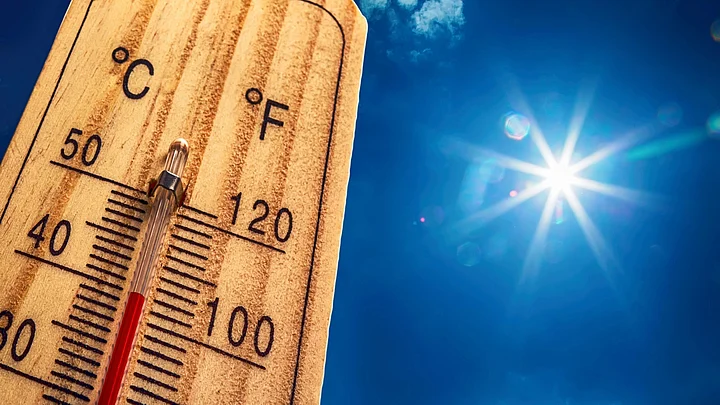Instead of giving you just general information on whether it's going to be rainy or sunny, would you want your weatherperson to tell you what exactly the weather would "feel like" – so you're at least mentally prepared?
The India Meteorological Department (IMD) is planning to do exactly that by issuing heat index readings for weather stations across India, including in Delhi, this summer, officials said on Monday, 27 March.
Essentially, what these readings will do is give people "a sense of what the temperature actually feels like," or "real feel," in addition to the day's maximum and minimum temperatures.
So, how will the heat index reading be carried out? What are the parameters that will determine the heat index reading? And when will it be rolled out? We explain.
What Exactly Is 'Real Feel' Temperature?
Simply put, it is an index that describes what the temperature really feels like to the human body.
For instance, you may experience unusually high levels of heat despite the official temperature forecast indicating a 'normal' range. Say, if the absolute humidity of an area is high, you may feel hot, even though the temperature may not necessarily be that high.
Similarly, say there is a wind blowing; you will automatically feel colder, even if the temperature may not be so low.
How Will the Heat Index Be Calculated by IMD?
IMD officials told The Times of India that the heat index readings will be calculated considering meteorological factors, such as:
Relative humidity
Minimum and maximum temperatures
Wind speed
Duration of heatwave spell
What Happens After the Reading?
Based on the expected heat index reading, a colour-based warning – red, yellow, or orange – will also be issued, an IMD official told The Quint. It will also list the precautions one can take based on the temperatures.
Why Is This Important?
According to a 2022 study by IMD scientists, heatwaves have increased by about 24 percent during 2010-2019 as compared to 2000-2009, and associated mortality rates have also increased by about 27 percent.
The study also noted that heatwaves in India are expected to intensify and cause an increase in heat stress (a condition that causes the body's core temperature to rise as it is unable to regulate heat).
And it is not just the IMD. A recent report by the World Bank states that India could experience intense heatwaves that could break the human survivability limit.
It essentially drives home the point that India is just going to get hotter.
The IMD study, meanwhile, noted that the mechanism by which heat impacts humans is complex. "It is a result of the interactions between temperature, radiation, wind, and humidity," it said.
Elaborating on how complex the mechanism is, the research quoted another study on heat stress levels over Delhi, Kolkata, Mumbai, and Chennai based on daily maximum temperature, relative humidity, wind speed, and solar radiation datasets from 1990 to 2019.
It noted that Delhi witnesses lower heat stress because of lower humidity although the temperature is higher in this region.
It added that the risks of heat stress and dangerous heat stroke events are maximum in Chennai due to high temperature along with higher relative humidity.
The study also highlighted the broader aspect of how an increase in the intensity of heatwaves will have a bearing on work performance, and therefore, policymaking.
It noted that a decline of about 30 to 40 percent in work performance is projected over India by the end of the century due to the elevated heat stress levels.
This, the study noted, poses challenges to the country's policymakers and prompts them to design safety mechanisms and protect people working under continuous, extremely hot weather conditions.
When & Where Will This Index Be Rolled Out?
Kuldeep Srivastava, a scientist at the IMD, told The Quint that only one heat index forecast will likely be issued for Delhi, which will be based on the expected weather at Safdarjung.
But why Safdarjung? Because long-term data on temperature, wind, and humidity are available for this observatory.
Also, with Safdarjung being the base, it will give an idea of what kind of weather is expected across the whole of Delhi, he reasoned, adding that it would be operational by around May or June this year.
Another IMD official told The Quint that in the long run, the goal is to issue heat index forecasts at the district level as well.
Do Other Countries Issue Heat Index Readings?
Yes, other countries do issue heat index readings. For instance, the United States National Weather Service (NWS) utilises this index.
According to The New York Times, the NWS uses heat index values to know when to issue heat advisories, watches, and warnings, which urge residents in an area to avoid being outside during the hottest parts of the day.
